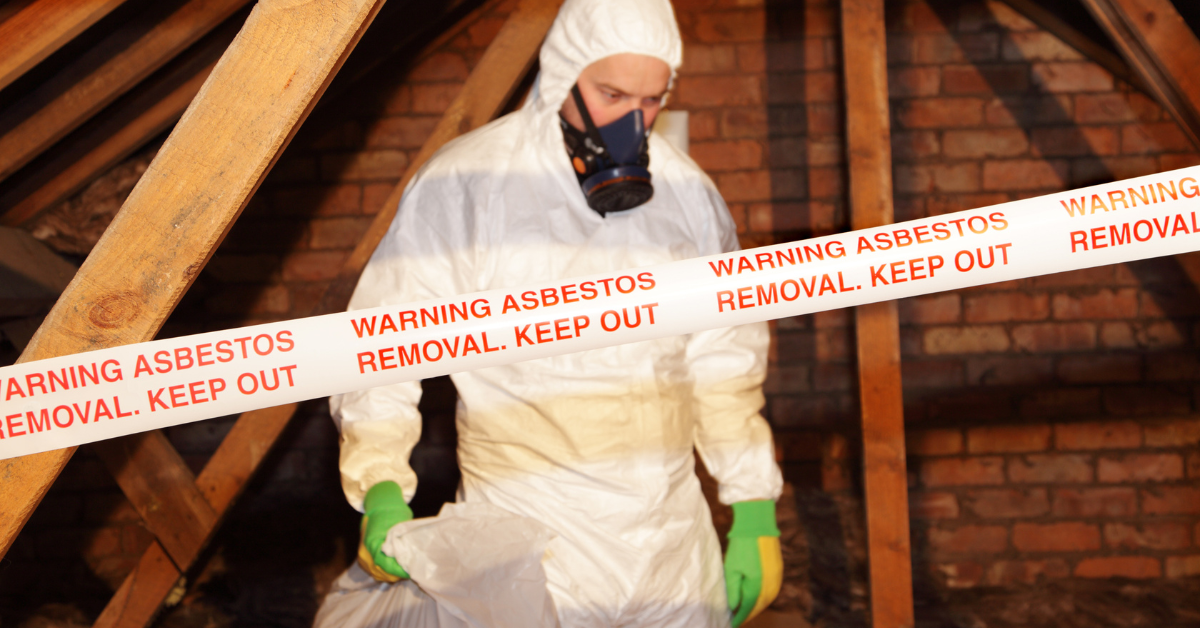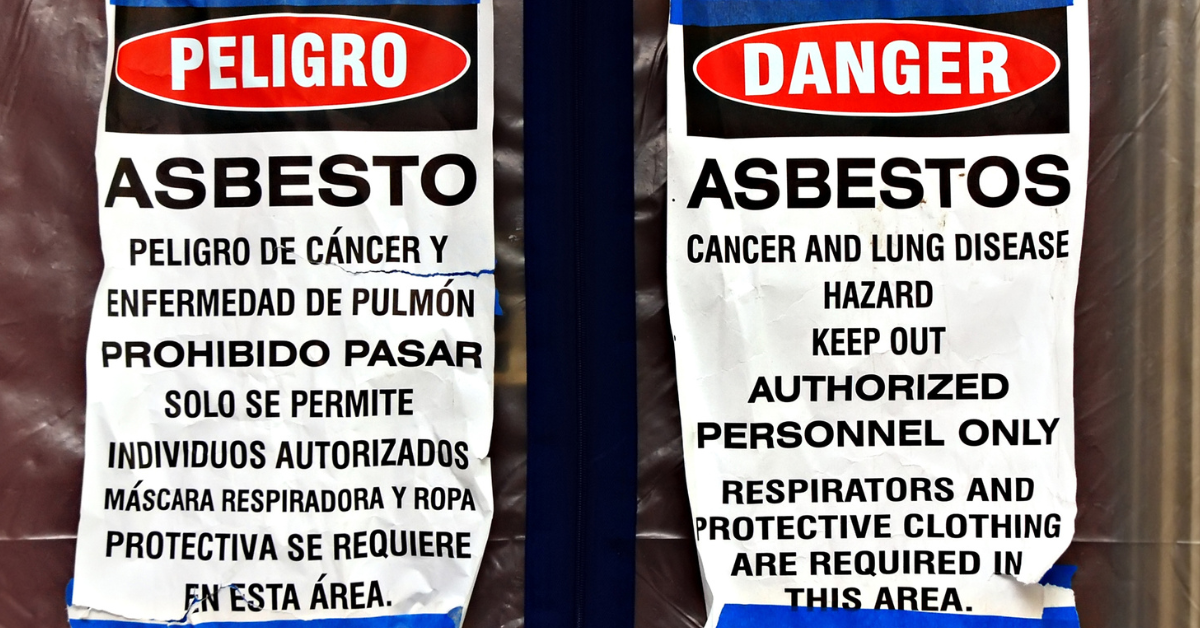If you have performed an asbestos survey and uncovered asbestos-containing building materials (ABCM) in your facility, home, or office, it’s critical that you take the right action. In doing so, you’ll ensure the safety and wellbeing of your workers or occupants, while at the same time complying with jurisdictional regulations.
Given both the regulatory and potentially hazardous nature of asbestos, you will want to know if you and other building occupants are at risk of exposure and whether you are subject to citations and fines for not following the “rules”.
Read on to learn about the hazards of asbestos and how to deal with any you may find during any renovation or demolition projects.
What Is Asbestos and Why Is Asbestos Dangerous?
Asbestos refers to a group of naturally occurring minerals used for industrial and commercial purposes. These minerals typically occur as bundles of fibers and are non-conductive to electricity and resistant to chemicals, fire, and heat. The most common form of asbestos used for commercial purposes is “chrysotile” asbestos.
This material can be dangerous because, when disturbed, it may release harmful microscopic fibers into the air, where they can stay for days. People can breathe in asbestos fibers, which can travel to the lungs and cause several severe illnesses, such as asbestosis, lung cancer, and mesothelioma.
Asbestos has been designated as a human carcinogen, a substance capable of causing cancer, however, it can also cause other respiratory diseases, specific to exposure to asbestos.
Exposure to airborne asbestos is insidious as, like many other harmful dusts, fumes, and fibers, it presents no “warning properties”, such as odors that may call attention to its presence and signal that proper precautions should be followed.
The extent to which asbestos exposure is harmful depends on several factors:
- The quantity of asbestos to which you are exposed
- The duration of exposure (today, this week, this month, this year, this working career)
- The type of asbestos you are exposed to, as some are more dangerous than others
- Whether or not you are a smoker*
*Generally, when a person is exposed to two different carcinogens, the respective risk factors are added together to determine the cumulative risk factor from being exposed to both carcinogens. However, for asbestos and smoking, these risk factors when combined actually have a multiplicative effect, so the factors are multiplied to determine the overall risk factor from being exposed to both carcinogens.
As a result of this synergistic and multiplicative risk effect, it has been shown that smokers who were exposed to asbestos have a 50 to 90 times greater risk of developing lung cancer than non-smokers who were not exposed to asbestos. This makes it that much more important for anybody who has been exposed to asbestos to quit smoking.
Besides lung cancer, the other most common cancer caused by asbestos exposure is mesothelioma. In contrast to lung cancer, research has shown that cigarette smoking has no relationship to a person’s risk of developing mesothelioma.

Is the Presence of Asbestos Always a Hazard?
Just because asbestos is present in a building, does not mean it presents a hazard. Only damaged or deteriorating asbestos-containing products are likely to release asbestos fibers. In these cases, asbestos is said to be “friable” which means “easily crumbled”. What it means in the case of asbestos is that the material is dry, damaged, in contact with doors, or in a location where it can be bumped and knocked which will lead to asbestos fibers being released into the air.
Call an asbestos specialist if you notice signs of damage, such as cracks, tears, or water damage. Avoid touching the material as you might inadvertently release asbestos fibers into the air.
The following scenarios may result in an asbestos hazard as fibers might be released into the air as most of the materials listed “may” contain asbestos:
- Disturbing loose-fill vermiculite insulation (EPA considers vermiculite to be “asbestos-containing regardless”)
- Disturbing or sanding acoustical plaster
- Dislodging acoustical ceilings tiles
- Removing deteriorating transite/cement siding or roofing shingles
- Sanding plaster
- Scraping or sanding older water-based asbestos coatings such as drywall, spackling, roofing compounds, paint, sealants, caulking, or putty
- Scraping or sanding old vinyl floor tiles or linoleum or even some of the adhesives behind those materials
- Stripping off old insulation from a hot water tank
- Tampering with roofing felt that contains asbestos
What To Do if You Find Asbestos During Home Renovation
The approach that trained and accredited asbestos professionals take in dealing with asbestos depends mostly on their perspective, however, our belief is that the more intact and undamaged the material is, the preferred practice should be “in place management”.
In other words, once suspect ACBMs have been identified by a proper building survey and the owner then knows exactly the materials that contain asbestos and their existing condition is perfect (non-friable), the material should be left alone.
If it is damaged, the damage should be assessed and the material should either be repaired or properly removed by licensed contractors.
All material in “perfect” condition or that has been repaired to perfect, should be then left alone, routinely surveyed to make sure it is still non-friable, and then removed when building renovation or demolition is necessary.
We have seen way too many building owners think it necessary to remove all ACBMs and create an unnecessary expense, and even contaminate a building further in their haste to deal with the ACBM.
It is worth emphasizing that only trained and accredited asbestos professionals are qualified to undertake removal as the process is complex and highly hazardous. Failure to remove the material properly may expose members of your household/tenants/employees to even more asbestos fibers.
Asbestos Inspectors and Asbestos Contractors
Two types of trained and accredited asbestos specialists help you deal with asbestos-containing materials you may encounter: asbestos consultants/inspectors and asbestos abatement contractors.
Consultants conduct building surveys that identify ACBMs and help come up with Management Plans to manage ACBM over time and asbestos contractors remove or repair the asbestos-containing materials.
The “rules” for both consultants and contractors in terms of their certification are pretty thin. EPA only requires as little as high school education and as little as a few days or a few weeks to be able to apply for a license in most states.
Based on us having conducted several thousand building surveys for asbestos, it is inconceivable that either consultants or contractors can be taught all they need to know about asbestos in several days so that they are capable of conducting proper surveys or abating ACBM properly.
The experience and credentials of those you select to deal with asbestos should always be considered when dealing with asbestos. In the case of experience dealing with asbestos, just having a license is NOT a sign of competency.
References should always be checked and even reviewing other jobs they have done is a good idea. Checking with local regulators is also a good idea as they can help you gain insight into the quality of these individuals.

Hiring the Right Asbestos Inspectors and Asbestos Contractors
Ideally, the asbestos inspector you hire should be independent of the asbestos contractor you hire to remove or repair the asbestos-containing materials. Doing so avoids conflict of interest.
Ask both professionals to provide proof of their asbestos training and accreditation before hiring them and check reviews from previous customers to ascertain their performance records.
Once you hire an asbestos inspector, ensure they perform a thorough visual examination and carefully collect samples for testing. If the inspector finds asbestos, they should provide a comprehensive report detailing the extent and location, as well as condition, of all ACBMs.
The report should include recommendations for dealing with asbestos. It is also highly recommended that they develop a “Management Plan” for the abatement of all ACBMs or the long-term “In Place Management” of ACBMs.
When hiring an asbestos contractor, ask for a written contract detailing the work plan, post-work cleanup, as well as the applicable regulations they must comply with. These include handling, removal, repair, and disposal procedures.
Once they complete the job, ask for a written assurance that they followed all the procedures in the contract and most importantly that all asbestos-containing waste material has been properly disposed of and you obtain the proper documentation to that effect.
Stay Safe From Asbestos Exposure
Discovering asbestos-containing material in your property during a renovation or at any time can be concerning because asbestos exposure is a potentially severe health hazard.
Hire a qualified, licensed asbestos inspector, with plenty of experience and a resume to prove it, to assess your facility and determine whether you should remove or repair it. Then hire a reliable and reputable asbestos contractor to undertake the corrections recommended by the inspector.
Contact the Lawson Group today to learn more about renovating your home safely.







